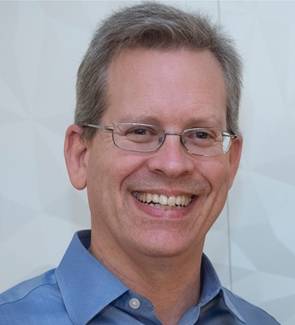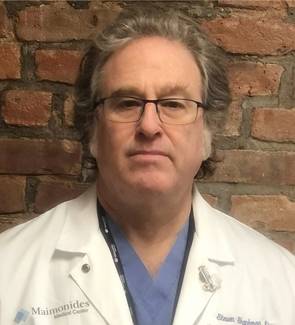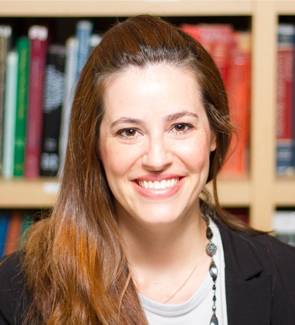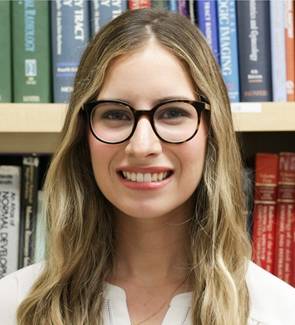As the COVID-19 pandemic ravaged New York City in early 2020, visitors were barred from hospitals all over the city to slow the spread of the virus. Although necessary from an epidemiological standpoint, restricting visitor access led to a challenge of a different kind: keeping loved ones and caregivers updated about patients’ health statuses.

In addition to volunteering on the phones, Evan G. Stein, MD, PhD, residency program director and director of neuroradiology at Maimonides Medical Center, recruited radiology attendings and residents to join the Call Squad. |
With a desire to maintain open lines of communication to patients and families, a mix of faculty and residents from across Maimonides Medical Center in Brooklyn, New York, signed up to work a phone bank. These physicians put in time after their regular work hours, calling families and caregivers who the primary care team could not reach during overwhelming workdays. Dubbed the “Call Squad,” the group attracted dedicated radiology leaders and radiology residents who wanted to support their clinical colleagues in an hour of need.
Putting Out a Call
In the spring of 2020, hospital administrators wanted to quickly ramp up clinical support in anticipation of an influx of patients. As part of these efforts, they issued a call to program directors and department chairs, including leaders in Maimonides’ radiology department: Free up as many residents and attendings as possible to serve in newly created surge intensive care units and COVID-19 wards. (Read more about these efforts in this
Imaging 3.0 case study.)
In addition to modifying schedules to make members of the radiology department available to staff the COVID-19 floors, Evan G. Stein, MD, PhD, radiology residency program director and director of neuroradiology at Maimonides, asked some radiology attendings to participate in the Call Squad. This dedicated group kept loved ones of COVID-19 patients informed throughout April, May, and the beginning of June of 2020.
“My wife was working on a similar effort at NYU Langone Hospital, and I knew radiology was involved there,” Stein explains. “I reached out to Robert Press, MD, PhD, the executive vice president of medical affairs at Maimonides, and Robin Gitman, Maimonides’ vice president of academic affairs, to learn whether our hospital had implemented a comparable phone bank. They directed me to Jennifer B. Breznay, MD, a geriatrician at Maimonides, who was organizing a similar effort here. As it turns out, initially she was looking for attending physicians to participate.”
The impetus for starting the Call Squad at Maimonides, Stein attests, was the same as it was elsewhere: maintaining communication with concerned family members. (Read this
Imaging 3.0 case study about radiologists at NYU Langone Health who volunteered to update loved ones of COVID-19 patients.)

Chair of Radiology Steven Shankman, MD, helped call families and caregivers three to four nights per week. |
As the number of COVID-19 patients continued to rise, Stein; Steven Shankman, MD, chair of radiology; a growing number of radiology attendings; and several mammographers joined the ranks to call families and caregivers three to four nights per week. Despite their efforts, however, it still wasn’t enough to meet the increasing demand. “The program required more regular participation than radiology attendings could offer because of increased and constantly modifying clinical responsibilities,” Stein notes. “So, I arranged for radiology residents to begin taking on Call Squad duties.”
Volunteers participated in an onboarding session during which presenters discussed the technical process of how to find phone numbers and names of who to call, along with how to use translation services when needed. At a high level, they also discussed the best practices for talking with family members about patients’ conditions. “Very superficially, we were educated on how to have these conversations with family members,” Stein says. “But the assumption was that, since this was a volunteer operation, you wouldn’t have elected to participate if you didn’t have an effective bedside manner.”
Making Connections
Program leaders provided scripts to these communicators, along with guidance from a palliative care group in Seattle that had started a similar program. Once members of the radiology department began making calls, they noticed that although loved ones asked a range of questions, one question came up most frequently. “Families and loved ones wanted to know the chances of the patient’s ultimate recovery,” notes radiology resident and Call Squad participant Marcela Marsiglia, MD. Since the future was uncertain, she says that she and others on the Call Squad team tried as much as possible to redirect conversations and explain how each patient was doing objectively.

Call Squad participant Marcela Marsiglia, MD, tried to redirect conversations to explain how each patient was doing in objective terms. |
Stein says that patients’ loved ones appreciated the Call Squad’s efforts to keep conversations grounded in facts. “When I called people, I found that giving them objective measures and putting these measures in a context of ‘better, worse, about the same’ went a long way toward keeping communication calm and hopeful.” Stein further explains that although he offered answers to many specific questions related to, for example, patients’ sodium levels and medicines administered on a given day, he also answered more general questions like, “How is the hospital doing?” and “Are things getting better or worse in New York?” “I was an outlet for people to discuss their frustrations,” Stein adds. “I tried to call the same families as often as possible and, if the family had new questions about an unforeseen change, I tried to get someone from the care team to call them back directly.”
Although fielding questions on the Call Squad proved rewarding for first-year radiology resident Katerina Freyre Diaz, MD, she recalls being confronted by many tough questions. “I think the most challenging questions involved families asking whether their loved ones were going to make it and, if so, when they’d be discharged. Sadly, those were mostly unanswerable questions.” Diaz explains one strategy she often deployed to respond: “I would show empathy, saying that I could only imagine how difficult and frustrating it must be not to be able to see their loved one and not have the ability to speak directly with the physician providing care.” Diaz adds that she made a point of reassuring the people she called that the doctors were doing the best they could with the limited knowledge available about COVID-19. “In the end, most family members showed appreciation for our effort to provide them with up-to-date in-formation.”
Drawing on Expertise
Marsiglia found her skills as a radiologist helpful in providing a realistic assessment of each situation. “In addition to reading the notes, I was able to see each patient’s progress in the radiological imaging,” Marsiglia recalls. “For example, when the notes said, ‘Oxygen saturation improved and the patient was extubated,’ the images would show that lung opacities had improved and an endotracheal tube was no longer present. As a radiologist, visually noting such progress helped me to accurately understand the notes, which in turn allowed me to provide accurate information to the families.”

First-year radiology resident Katerina Freyre Diaz, MD, often made a point of reassuring patients’ loved ones that the physicians were doing the best they could with the limited knowledge available about COVID-19. |
“The memory that sticks out most sharply for me,” says Stein of his time on the phones, “was the family who asked me to find a translator to go to a patient’s bedside and tell her that the family was praying for her and thinking of her and missed her. I was able to contact one of the doctors taking care of the patient, and he tracked down a nurse who spoke the patient’s native language. The family was very happy to hear that I would be able to fulfill their request.”
Despite the stereotype that radiologists pursue the specialty to avoid speaking with patients and families, Stein found that the radiologists and radiology residents on Maimonides’ Call Squad were well-suited to communicate changes in patients’ conditions. “The residents who participated in the Call Squad were great communicators,” Stein observes. “And I believe that during the pandemic, they have further improved communication skills that will serve them well in their future radiology careers.”





